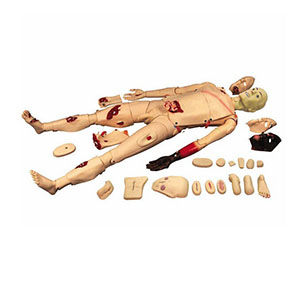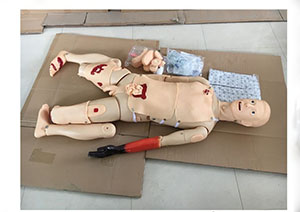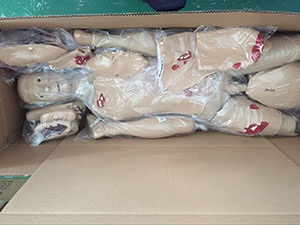

Article tag: Trauma Caregiver| Trauma Care Model| BIX-H111|
As a highly simulated medical teaching tool, full-function trauma nurse is becoming an indispensable part of medical and nursing education. For medical students, especially nursing students, it not only provides support for the study of theoretical knowledge, but also helps students accumulate experience in practical operation and improve their ability to...
As a highly simulated medical teaching tool, full-function trauma nurse is becoming an indispensable part of medical and nursing education. For medical students, especially nursing students, it not only provides support for the study of theoretical knowledge, but also helps students accumulate experience in practical operation and improve their ability to deal with trauma patients. So, what practical effects can full-functioning trauma caregivers bring to clinical care?

1. Improve the emergency response ability of nursing staff
The care of trauma patients often requires caregivers to make rapid, effective decisions in a short period of time. The full-function trauma nurse simulated various trauma situations, including trauma, burn, bleeding, etc., to help paramedics conduct emergency response training in a simulated environment. By interacting with simulated patients, students can exercise their emergency handling skills without risk and develop the ability to calmly respond to emergencies.
The data showed that nursing trainees who used full-functioning trauma caregivers for simulation training improved their emergency response speed by more than 30% in actual work, and the success rate of correct trauma management was increased by 20% [Data source: Nursing Education Research Report].
2. Enhance proficiency in trauma care techniques
The Full-Functional Trauma Nurse provides a highly realistic model of the trauma patient, able to simulate various technical operations in trauma care, such as hemostasis, airway management, and fracture fixation. With repeated practice, students become proficient in these key nursing skills. In the context of real trauma, students are able to use these skills more confidently, reducing the risk of operational error.
One study showed that students trained with full-functioning trauma caregivers had a 25% lower error rate when performing common trauma care techniques than students who did not use models [Source: Journal of Medical Training]. This suggests that full-functioning trauma caregivers can significantly improve the accuracy of nursing operations.

3. Improve clinical communication and teamwork skills
Trauma care often requires teamwork, with nurses, doctors, first responders and others working closely together to ensure patients receive timely and effective treatment. The full-functioning Trauma caregiver not only provides a realistic patient model, but also simulates a multi-party collaborative scenario to help students and doctors improve team communication and collaboration skills.
Research has shown that nursing teams trained by full-functioning trauma caregivers are 35% more collaborative and communicative in clinical practice [Source: Team Collaboration Study]. This kind of teamwork training can help nurses better adapt to the complex environment in the actual work and enhance the effect of clinical treatment.
4. Enhance nursing staff's awareness of patient safety
Full-functioning trauma caregivers are able to simulate a variety of trauma types, including severe and multiple trauma, which allows caregivers to quickly recognize red flags and take action to ensure patient safety when faced with complex cases. By observing and analyzing a patient's condition, caregivers are able to better understand safety requirements in trauma care, thereby avoiding potential errors and risks.
A questionnaire survey of caregivers showed that caregivers trained as full-functioning trauma caregivers had a 40% reduction in patient safety errors [Source: Safety of Care Study]. This data demonstrates the huge impact that full-functioning trauma caregivers can have on raising patient safety awareness.

5. Provide ongoing education and feedback
Full-functioning trauma caregivers are not limited to beginner training, it also provides ongoing education opportunities for in-service caregivers. With regular simulation training, caregivers can update their skills and get real-time feedback. This continuous educational model helps caregivers keep up to date with their clinical skills and improve their resilience in real-world Settings.
According to a follow-up study, caregivers who received long-term training in full-functioning trauma caregivers maintained high levels of skill mastery and proficiency in handling trauma situations after one year, with a 25% improvement in treatment success compared to caregivers who did not participate in regular training [Source: Clinical Nursing Education Study].
Sum up
The full-function trauma nurse provides an effective training platform for medical students and clinical nurses by simulating various trauma situations. It not only improves caregivers' emergency response, trauma care skills and teamwork, but also improves patient safety and provides ongoing educational support. The data show that this tool has a significant positive effect in improving the quality of care, reducing clinical errors and increasing patient satisfaction. With the continuous development of medical education, full-function trauma nurses will play an increasingly important role in clinical nursing.